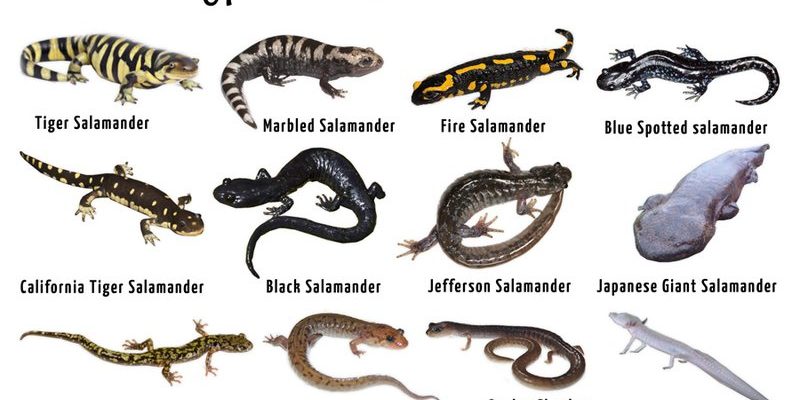
Imagine living in a world where the temperature can fluctuate wildly, or where predators lurk around every corner. That’s the life of a salamander, and they’ve developed some pretty nifty tricks to ensure their survival. Whether it’s their ability to regrow lost limbs or their specialized skin, each adaptation serves a crucial role in helping them navigate through life. So, grab a cup of coffee, and let’s dive into the incredible adaptations that make salamanders the ultimate survivors of the animal world.
Regeneration: The Marvel of Limb Regrowth
One of the most fascinating features of salamanders is their ability to regenerate lost limbs. Yes, you heard that right! If a salamander loses a leg or even part of its heart, it can regrow it. This isn’t just a neat party trick; it’s a critical survival mechanism. Imagine a predator snatching at their limbs or a bad fall. Instead of being left vulnerable, a salamander can simply grow back what it’s lost.
So, how does this regeneration work? It all comes down to special cells called *blastemal cells*. These cells have the potential to transform into different body types, meaning they can become muscle, skin, or even bone. It’s like having a personal workshop where your body can make exactly what it needs. The regeneration process typically takes several weeks to months, depending on the species and environmental factors, but once it’s complete, they’re back to their usual self, ready to face whatever comes their way.
You might be wondering how this ability affects their survival. Regrowth gives salamanders a fighting chance against predators. If a hungry snake grabs a leg during an unfortunate encounter, that salamander can escape and eventually regenerate its missing limb. This strategy not only ensures individual survival but also aids in the continuation of their species.
Skin Adaptations: A Barrier and Weapon
Salamander skin is an amazing adaptation that serves multiple purposes. For starters, it’s not just for looks—it plays a key role in protecting these creatures. Their skin contains mucous glands, which produce a slimy secretion that keeps them moist. This moisture is crucial, as most salamanders need to stay hydrated due to their permeable skin. Think of their skin as a barrier against dehydration.
But it doesn’t stop there! Salamanders also have a variety of skin colors and patterns that help them blend into their surroundings. This camouflage makes it harder for predators like birds or snakes to spot them. If you’ve ever tried hiding in a game of hide-and-seek, you know how important blending in can be. The more unnoticed a salamander is, the better its chances of survival.
Additionally, some salamanders possess toxins in their skin. Species like the Eastern Newt have bright colors that signal danger to potential predators. It’s like wearing a “don’t eat me” sign. This toxic defense mechanism can deter many would-be attackers. Instead of fleeing, salamanders can stand their ground, knowing their skin provides protection.
Behavioral Adaptations: Smart Survival Strategies
Beyond physical adaptations, salamanders also exhibit clever behaviors that enhance their survival. For example, many species are nocturnal, meaning they come out at night. Why? It’s cooler, and there are fewer predators active. This nocturnal lifestyle not only helps them avoid danger but also allows them to hunt for food when their prey is most active.
Salamanders also practice hiding and burrowing. Many species will dig into the ground or hide beneath leaf litter during hot, dry days to maintain their moisture levels. This behavior is a straightforward survival tactic—by staying out of sight and out of the heat, they can avoid dehydration and predation.
Another interesting behavior is their use of pheromones. These are chemical signals that salamanders release into their environment, which can attract mates or warn others of danger. It’s like sending a text message to their fellow salamanders. This form of communication plays an essential role in their reproductive success and overall survival.
Habitat Versatility: Thriving in Different Environments
Salamanders are particularly adaptable when it comes to their habitats. You can find them in forests, wetlands, grasslands, and even deserts! This versatility stems from their adaptability to various moisture levels and temperatures. Different species have different preferences, allowing them to occupy a range of ecological niches.
For instance, the Eastern Red-backed Salamander thrives in moist woodlands, while the Tiger Salamander can be found in drier areas, like grasslands and farmlands. This ability to live in diverse habitats is crucial for their survival, as it ensures that they can find suitable areas to thrive, especially as climates change.
Moreover, some salamanders are known to migrate. For example, during breeding season, many species will travel from their summer habitats to their breeding ponds. This migration is a vital part of their life cycle and helps ensure the survival of the next generation. By venturing to different areas, salamanders can avoid overpopulation and competition for resources.
Reproductive Strategies: Ensuring Future Generations
Salamanders have developed various reproductive strategies to ensure their species continue to thrive. Most salamanders reproduce through internal fertilization, where the male transfers sperm to the female. After mating, females will often lay eggs in water or moist locations, ensuring a high chance of survival for the hatchlings.
One interesting fact is that some species even provide care for their eggs. For example, the Marbled Salamander lays her eggs in moist soil during the fall and guards them until they hatch in the spring. This nurturing behavior increases the chances of survival for the young salamanders, as they’re protected from predators and environmental hazards.
In addition, some salamanders undergo a process called *paedomorphosis*, where they retain juvenile traits into adulthood. This means that certain species can reproduce while still in their larval form. This adaptation allows them to take advantage of favorable conditions without needing to undergo metamorphosis, ensuring they can procreate without the risks associated with transforming.
When it comes to surviving in a world full of challenges, salamanders truly stand out. Their adaptations—from remarkable limb regeneration to clever behaviors—empower them to navigate their environments and thieve the odds. It’s like they’ve been equipped with an array of survival tools that allow them to cope with almost anything nature throws their way.
By understanding these adaptations, we not only marvel at these unique creatures but also recognize their importance in our ecosystems. Salamanders are vital indicators of environmental health, so protecting them means preserving countless other species and the habitats we all depend on. Next time you see a salamander, take a moment to appreciate its resilience and the incredible adaptations that help it thrive against the odds.

